Introduction
In the realm of contemporary architecture, modern concrete houses have emerged as a testament to innovation, sustainability, and aesthetic elegance. This architectural style, characterized by its minimalist design and structural robustness, has evolved significantly since the mid-20th century, influenced by movements such as Brutalism and Minimalism.
As concrete transitions from a utilitarian material to a versatile medium, it allows architects to explore new design methodologies that enhance both functionality and visual appeal. With an increasing global infrastructure investment gap projected to reach $15 trillion by 2040, the role of modern concrete housing is pivotal in addressing future demands while promoting sustainability.
This article delves into the defining characteristics of modern concrete houses, explores key design features, evaluates the advantages and challenges of concrete in home design, and highlights innovative trends shaping the future of this architectural form. Through a comprehensive examination of inspiring examples, it becomes evident that modern concrete architecture not only meets the needs of contemporary living but also reflects a commitment to environmental consciousness and adaptability in an ever-changing world.
Defining Modern Concrete Houses: Characteristics and Evolution
Contemporary structures exemplify a harmonious blend of minimalist aesthetics and robust structural integrity, with this material serving as the primary building resource. This architectural approach has undergone a remarkable evolution since the mid-20th century, significantly shaped by influential movements such as Brutalism and Minimalism. Initially, this material was mainly associated with practical structures; however, recent progress in technology and creative methodologies has transformed its use, permitting it to arise as a flexible medium that improves both functionality and aesthetic charm.
High-quality renderings serve as crucial tools in this process, providing a window into the future of projects and enabling informed decision-making. According to the Global Infrastructure Hub, there is a projected global infrastructure investment gap anticipated to reach $15 trillion by 2040, emphasizing the essential role of contemporary building materials in meeting future infrastructure needs. The modern concrete house exterior exemplifies modern styles with clean lines, open floor plans, and thoughtful integration with natural elements, embodying a commitment to sustainability and innovation in architectural practices.
For example, the use of green roofs and energy-efficient systems in contemporary buildings demonstrates a practical application of sustainability principles. Furthermore, the COVID-19 pandemic has accelerated trends such as remote work, directly impacting construction project schedules and labor availability. This change emphasizes the importance of adaptability in project oversight and construction, ensuring that contemporary masonry homes can adjust to changing societal requirements.
By incorporating user-focused principles, these homes enhance usability and comfort for occupants, making them suitable for a variety of lifestyles. As we transition into 2024, the trends in contemporary housing continue to demonstrate a growing focus on efficiency and environmental awareness, addressing the urgent need for adaptable and resilient living spaces.
Exploring Key Styles and Design Features of Concrete House Exteriors
Contemporary cement exteriors can be categorized into unique styles, each representing particular principles of creation and aesthetic values. Industrial-style cement homes, for instance, are defined by their raw finishes and exposed structural elements, which emphasize the inherent strength and integrity of cement as a building material. These creations often showcase large, functional areas that emphasize utility while preserving an edgy visual appeal.
In contrast, the modern concrete house exterior tends to emphasize smooth, polished surfaces, expansive windows, and cantilevered structures, fostering a sense of openness and a seamless connection to the environment. Additionally, organic styles are gaining traction, blending solid materials with natural elements such as wood and stone to promote harmony with the surrounding landscape. Essential design features across these styles frequently include:
- Textured facades
- Innovative roof lines
- Sustainable elements like green roofs and solar panels
These features are increasingly pivotal in the latest trends for modern concrete house exteriors in 2024.
As David Kranker observes, ‘For over 30 years, our team of skilled painters has assisted Grand Rapids residents and enterprises in enhancing the exteriors of their properties with a new layer of paint,’ emphasizing the significance of visual attractiveness in solid structures. Furthermore, statistics indicate that homes with well-maintained surfaces can retain higher property values, emphasizing the need for regular upkeep. Regular cleaning and upkeep, as emphasized in our case study on maintenance tips for finished concrete floors, are crucial for preserving the appearance and durability of these surfaces.
This multifaceted method to creation not only enhances the visual impact of the modern concrete house exterior but also contributes to the functionality and sustainability of modern architecture.
The Advantages and Challenges of Using Concrete in Home Design
The impressive durability, energy efficiency, and minimal maintenance needs of the modern concrete house exterior make it stand out in residential design. Its thermal mass properties play a pivotal role in energy savings, enabling homes to remain cooler in summer and warmer in winter. Additionally, this material’s natural resistance to severe weather and pests significantly enhances its longevity, making it an ideal choice for modern construction.
Notably, the adoption of Portland Limestone Cement (PLC) offers a 10 percent reduction in carbon emissions compared to traditional Portland cement, aligning with the global push for sustainability. According to the Global Cement and Concrete Association, since 1990, emissions from the sector have decreased by 19.2 percent per ton, reflecting the industry’s commitment to reducing its environmental footprint. Global initiatives involving manufacturers, contractors, trade associations, and governments are crucial for further reducing greenhouse gas emissions in the industry of cement, fostering collaboration towards a sustainable future.
Moreover, using cement for building construction can lead to potential insurance benefits, particularly through hazard mitigation strategies that enhance the resilience of structures against environmental risks.
However, architects and builders must also navigate certain challenges inherent in cement construction. Possible problems like cracking can occur, requiring meticulous planning and execution. Furthermore, the environmental impact of cement production remains a concern, driving the need for innovative materials and practices.
Expert opinions emphasize the necessity of skilled labor, as the complexity of masonry work demands expertise to mitigate these challenges effectively. Therefore, grasping these elements is essential for making informed choices that utilize the material’s advantages while tackling its drawbacks, ultimately guaranteeing that the benefits in residential architecture surpass the obstacles.
Innovative Trends in Modern Concrete Architecture
The scenery of contemporary structural architecture is swiftly changing, propelled by cutting-edge technologies and aesthetic philosophies. A notable trend is the adoption of 3D printing technology, which not only enables the creation of intricate forms but also significantly reduces material waste in the construction process. This advancement aligns with the industry’s increasing emphasis on sustainability and efficiency.
According to Fortune Business Insights, the cemented architecture market is projected to be worth $4.59 billion in 2024 and reach $16.18 billion by 2032, exhibiting a CAGR of 17.0% during the forecast period (2024-2032). Moreover, architects are adopting biophilic concepts, seamlessly incorporating solid structures with natural elements to foster environments that enhance occupant well-being. The case study titled ‘2024 Architectural Trends’ reflects a shift toward sustainability, adaptability, and human-centered design in contemporary architecture, promoting eco-friendly practices and enhancing occupant comfort.
Additionally, the increasing popularity of colored and textured materials provides architects with enhanced customization options, allowing for a greater range of aesthetic expressions in their projects. It is also significant that there were 35,621 candidates actively working on licensure in 2022, indicating a growing interest in contemporary architecture. The integration of intelligent residential technologies within solid edifices is transforming how these structures interact with their environment, resulting in enhanced energy efficiency and elevated user experiences.
As we look towards 2024, these trends highlight a commitment to innovation, sustainability, and human-centered creativity in the architectural realm.
Showcasing Inspiring Examples of Modern Concrete Homes
Worldwide, significant instances of contemporary structures demonstrate the material’s remarkable adaptability across various cultures and climates. The Twins House in Indonesia, with a total area of 73 sqm, is designed for two families and features a chamfered corner that allows a tree to grow from it, ensuring privacy while blending into its context. Similarly, the Casa Brutale in Greece stands out with its innovative cantilevered design, showcasing the material’s strength while integrating harmoniously with the stunning natural landscape.
This architectural marvel exemplifies how this material can enhance rather than disrupt its environment. In Switzerland, Villa Vals showcases an intriguing example of underground living, where cement is utilized to create a unique dwelling that seamlessly blends with the mountainous terrain, offering a tranquil retreat that respects the natural topography. Additionally, the K House in Japan exemplifies a minimalist aesthetic, characterized by an innovative interplay of light and space that maximizes functionality while remaining aesthetically pleasing.
Meanwhile, the Cactus House in South Africa captivates with its striking geometric forms and commitment to sustainable architectural practices. The case study of Jimmy Butler’s Bigface Coffee Shop in Miami further illustrates how solid construction can reflect brand personality and enhance customer engagement, showcasing the versatility of this material in commercial spaces. These diverse examples not only reflect the evolution of modern architectural design but also underscore its foundational principles, particularly evident in the modern concrete house exterior.
As we look towards 2024, the architectural significance of these projects continues to inspire new designs that push the boundaries of concrete’s potential.
Conclusion
Modern concrete houses represent a significant evolution in architectural design, merging aesthetic innovation with sustainable practices. As explored throughout this article, these structures are characterized by their minimalist aesthetics and robust durability, shaped by movements such as Brutalism and Minimalism. The versatility of concrete has transformed it from a purely utilitarian material into a sophisticated medium that enhances both functionality and visual appeal, meeting the demands of contemporary living while addressing future infrastructure needs.
Key design features, including textured facades and sustainable elements, reflect a commitment to environmental consciousness and adaptability. The challenges associated with concrete, such as cracking and the environmental impact of cement production, are manageable through skilled labor and innovative practices, ensuring that the benefits of concrete in home design far outweigh the obstacles. Furthermore, the integration of emerging technologies and biophilic design principles signals a promising future for concrete architecture, emphasizing sustainability and occupant well-being.
Inspiring examples from around the globe, such as the Twins House in Indonesia and Casa Brutale in Greece, demonstrate the material’s remarkable adaptability across diverse cultures and climates. These projects not only showcase the aesthetic potential of concrete but also affirm its role in creating resilient and functional living spaces. As the architectural landscape continues to evolve, modern concrete houses will undoubtedly play a pivotal role in shaping sustainable and innovative environments for future generations. The commitment to pushing the boundaries of design and functionality in concrete architecture is not merely a trend; it is a fundamental shift towards a more sustainable and adaptable built environment.
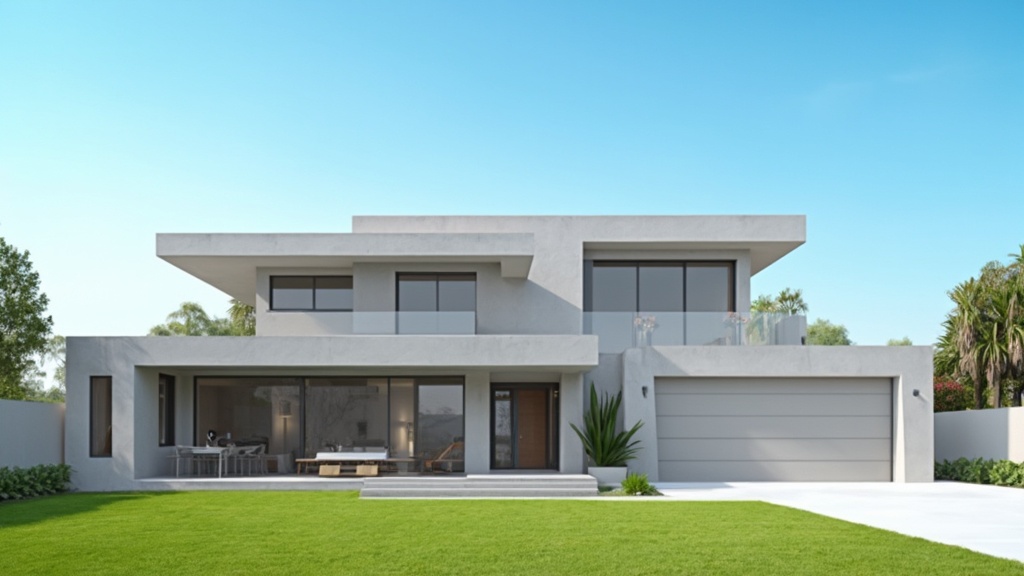
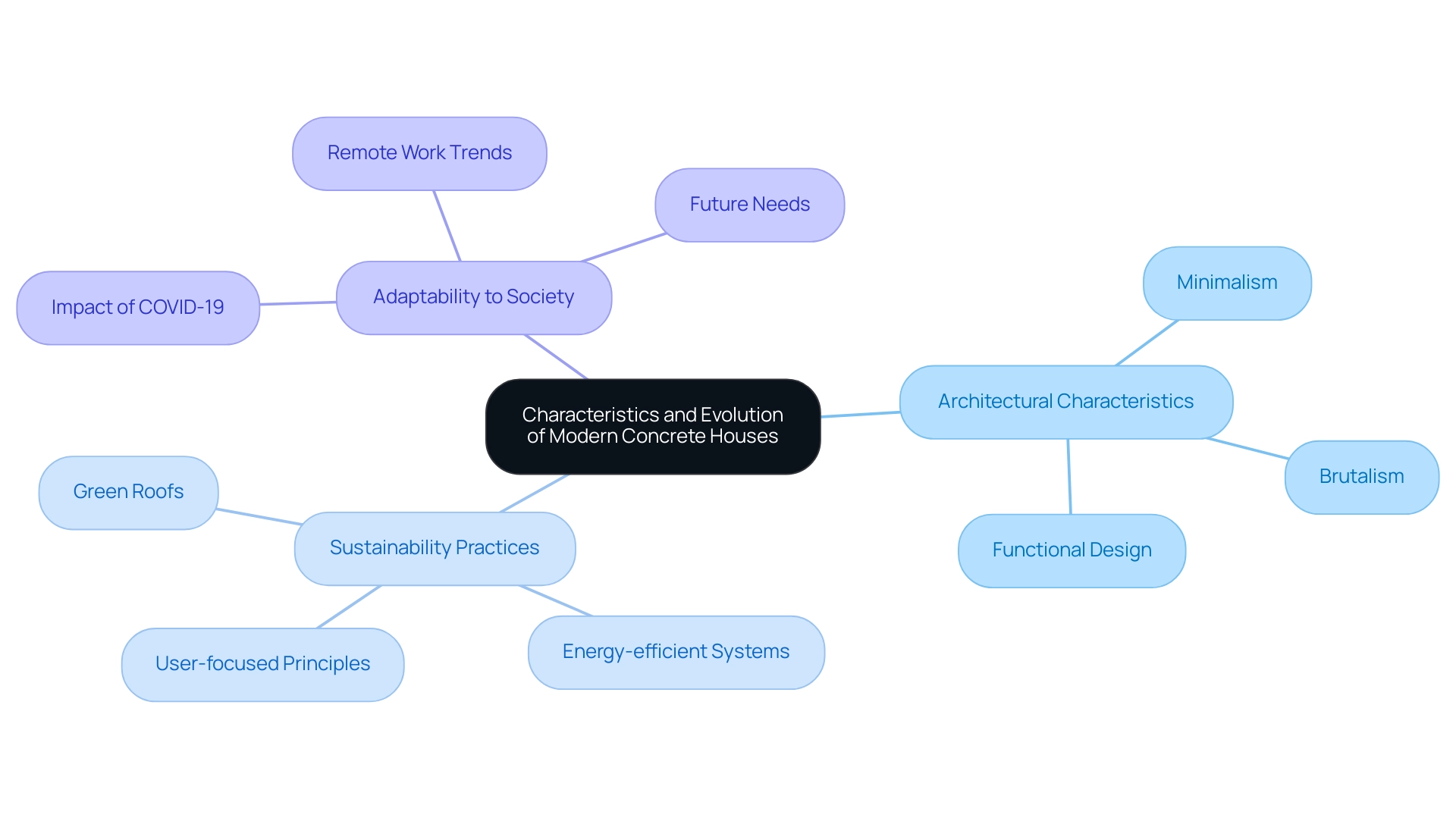
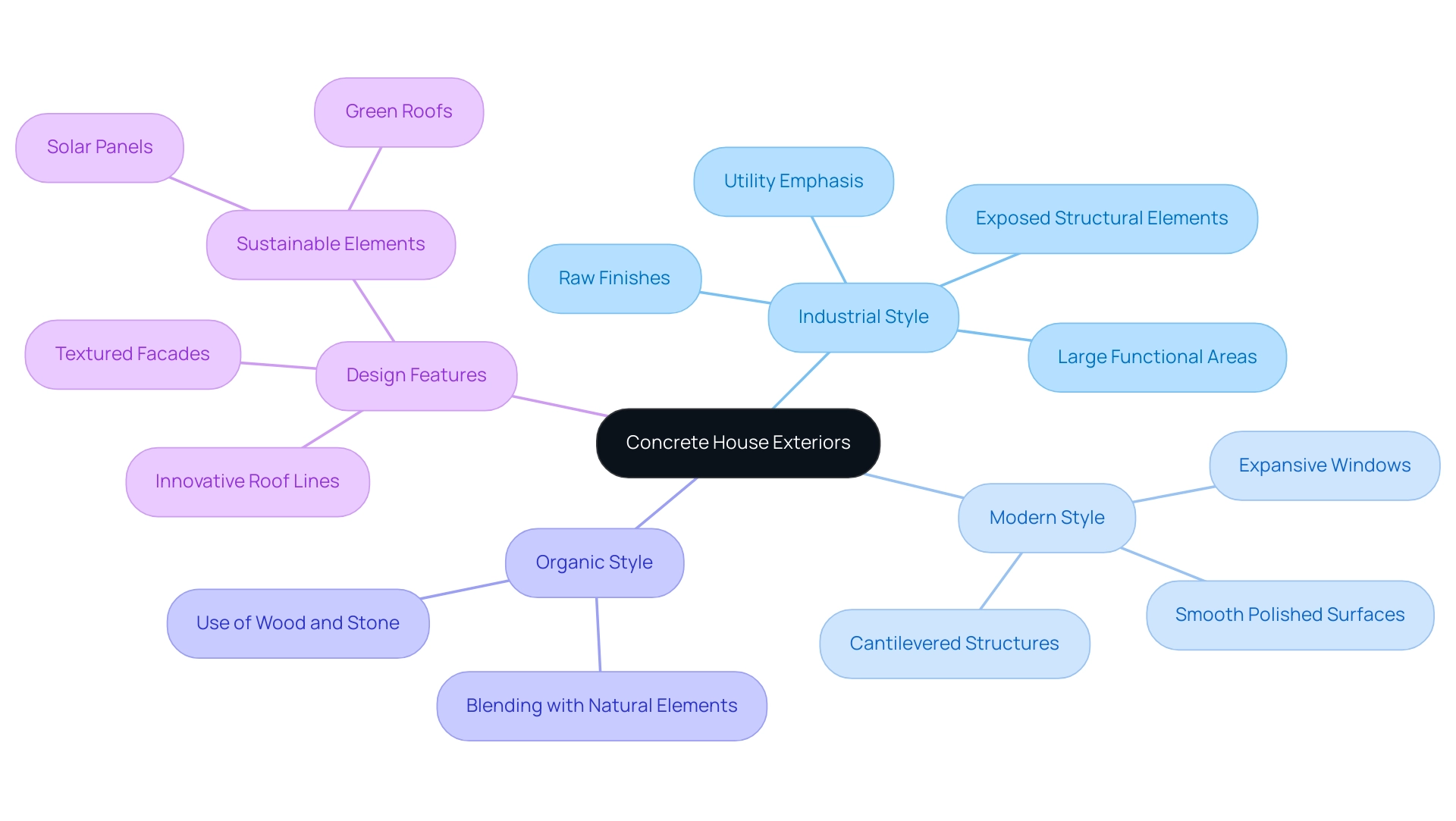
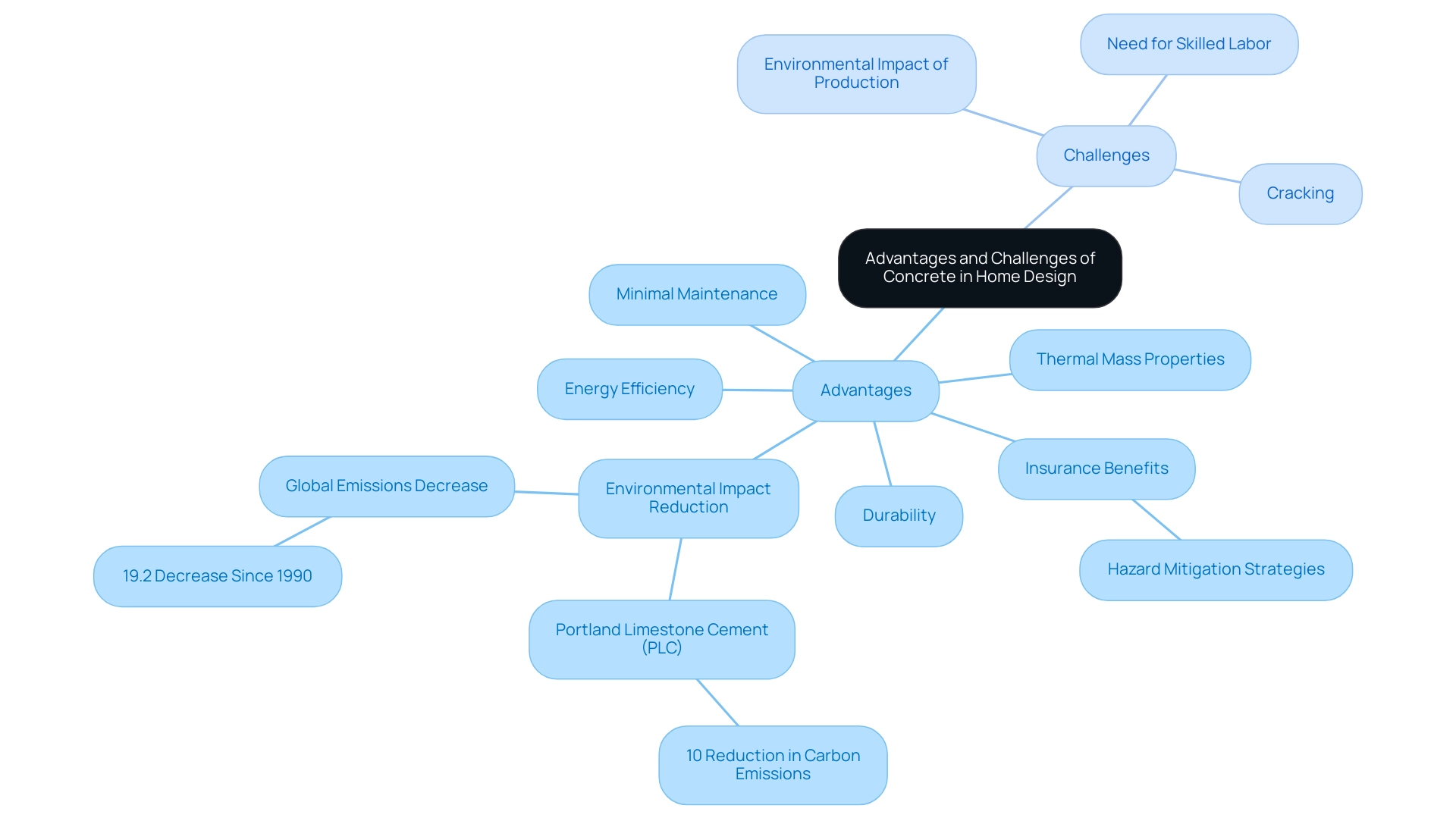
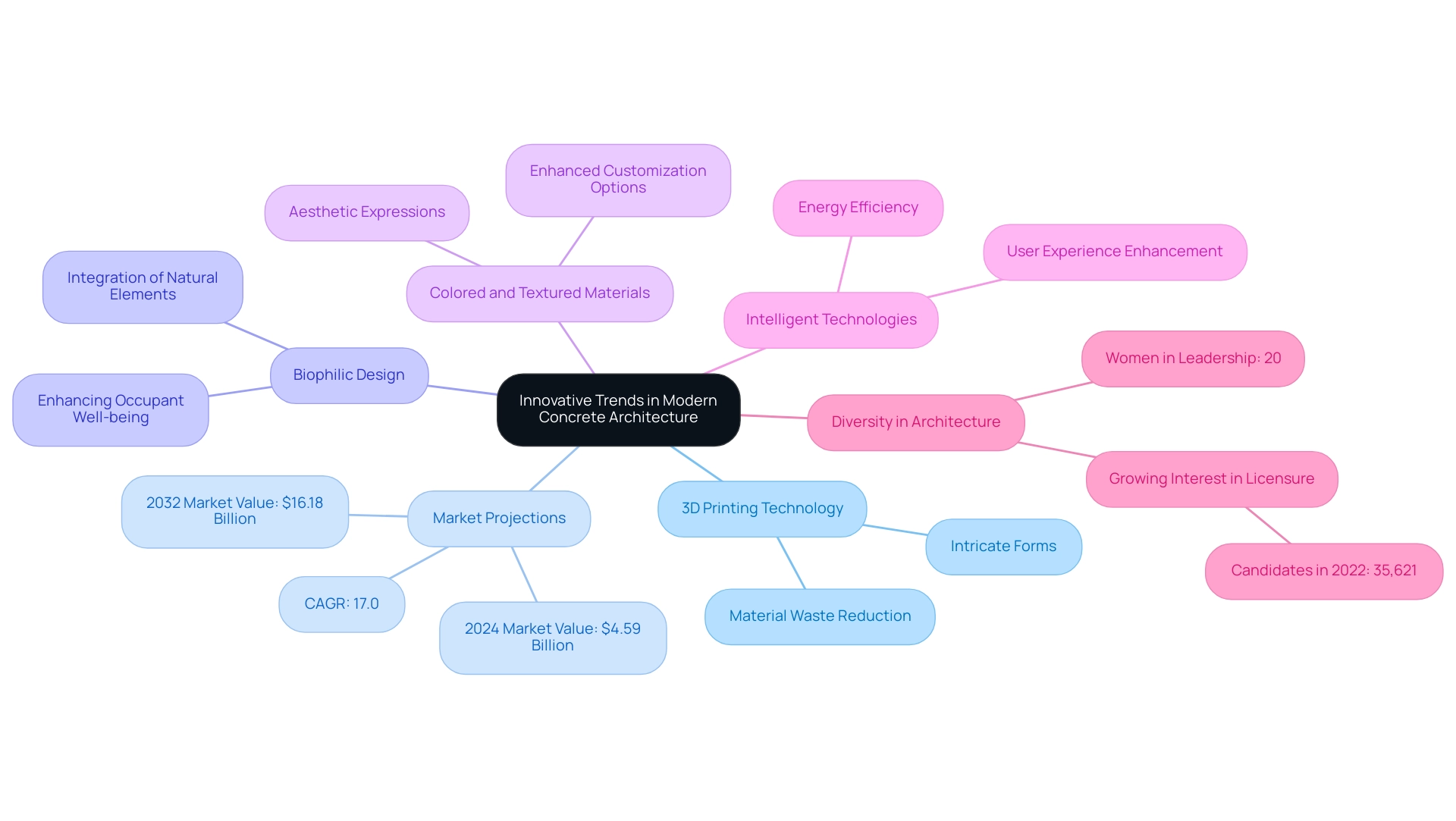
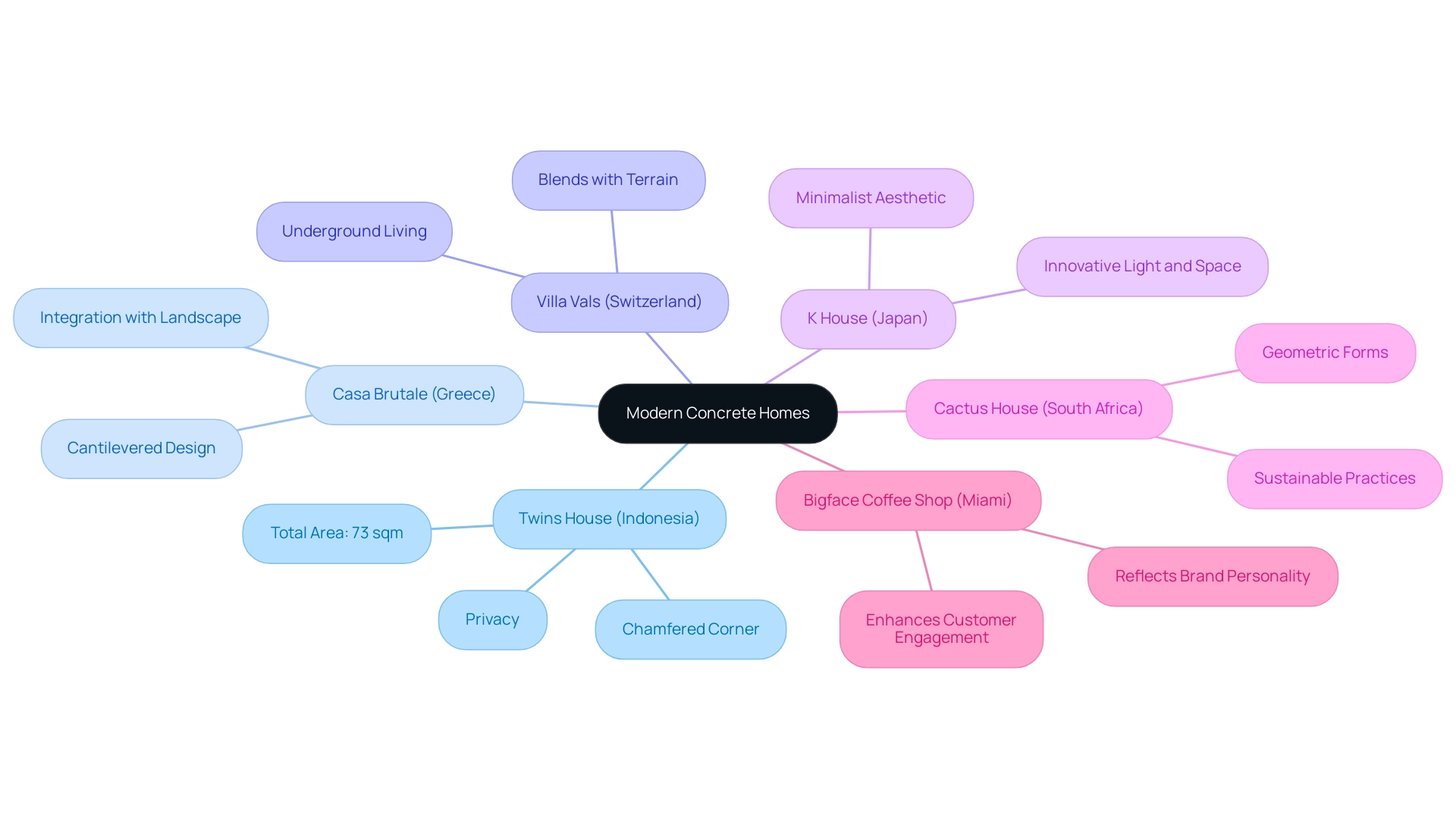
0 Comments